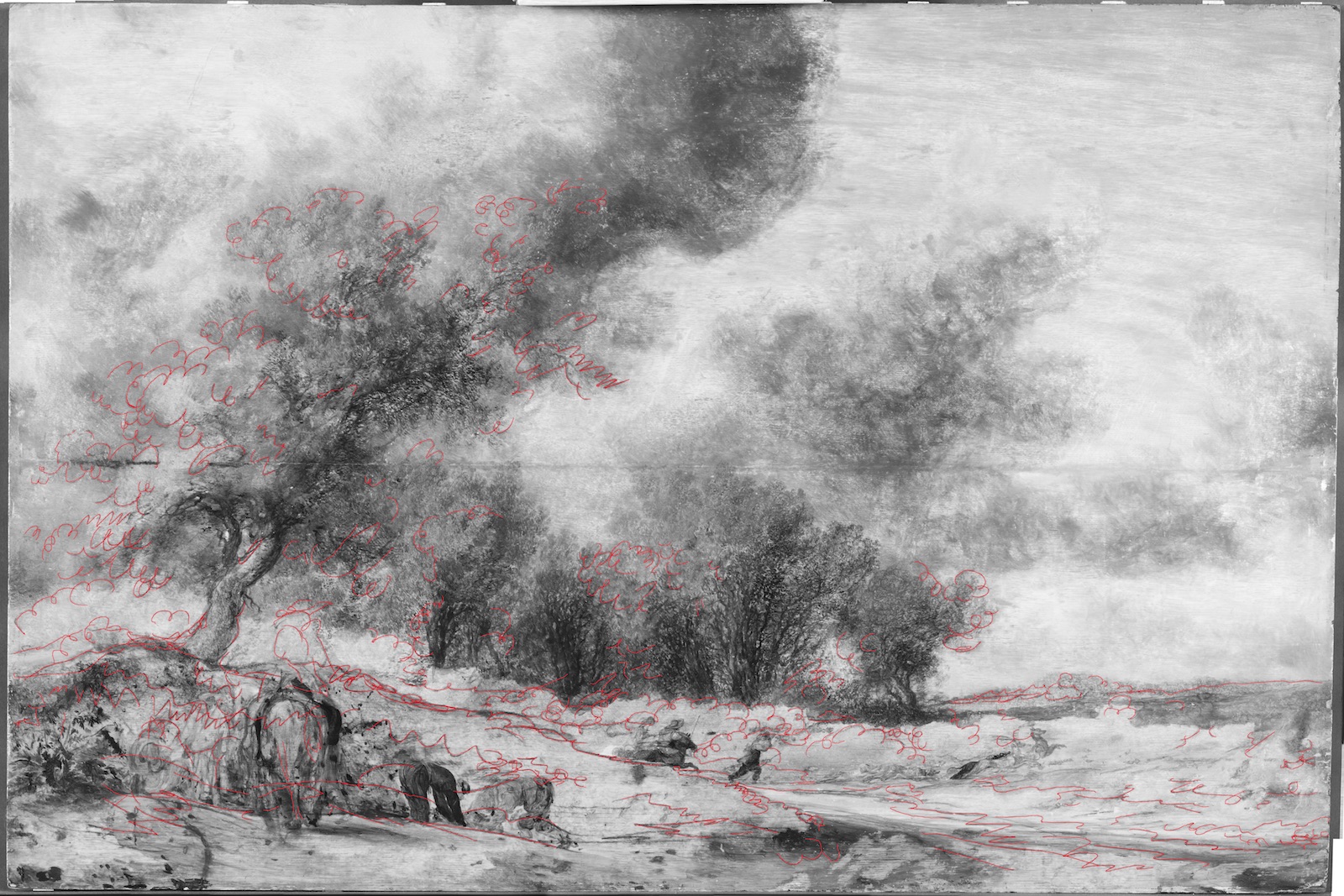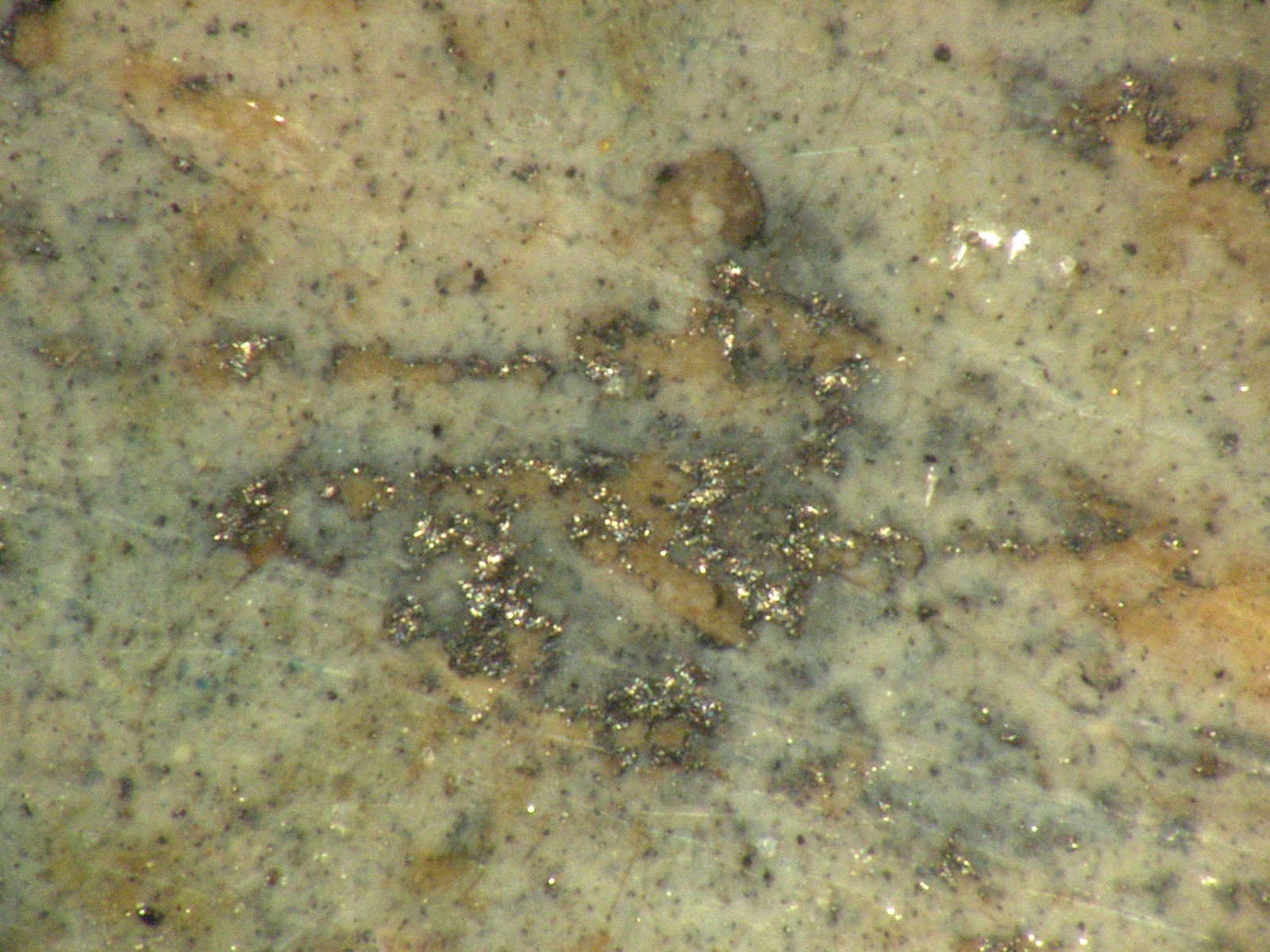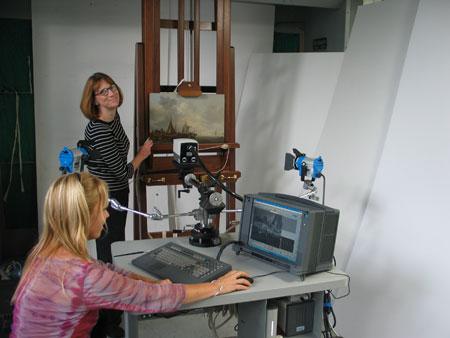Conservators often use analysis techniques adapted from other fields when examining works of art. One such technique is infrared reflectography, or IRR. The equipment consists of a digital camera with an infrared detector that is used to create images of how things appear in infrared light; all visible light is blocked. The black-and-white images produced are called infrared reflectograms. Such cameras were generally made for the military for missile targeting systems and also for the security surveillance industry, which uses them for night vision.

Infrared cameras with detectors sensitive in the short wave infrared section of the electromagnetic spectrum (SWIR), about 1000nm–1700nm, are particularly adept at imaging elements of a painting, such as underdrawings, not visible to the human eye. Most large museums with paintings collections have such cameras, and painting conservators, along with curators, have come to rely on IRR images to see underdrawings and changes made by an artist as he or she painted.

Underdrawings are essentially sketches or guides that artists created on the grounds of their canvases and panels before starting to paint on top. Changes by artists are called pentimenti and these can occur at any stage during the execution of a painting. As you can imagine, underdrawings and pentimenti can be instrumental for curators in authenticating or dating a painting. Another very important thing revealed by IRR images are areas of damage and restoration that may be difficult to see otherwise. Such images can often help conservators with deciding on a suitable treatment procedure.
When carrying out IRR, a painting is generally set up on an easel and evenly illuminated on either side with an infrared light source (tungsten halogen or regular incandescent bulbs). A digital camera, equipped with an infrared detector, is positioned on a tripod directly in front of the painting and gathers the infrared reflected by the painting, converting it to a signal that is displayed as a grayscale image (a reflectogram) on a computer screen. To create a high-resolution IRR image of the entire painting, the camera lens is placed close to the painting’s surface and then the painting, or the camera and lights, gets moved incrementally as individual, overlapping reflectograms are captured at each stage. These individual images are then seamlessly stitched together.


At LACMA we regularly use the Phoenix digital infrared camera, made by Indigo, to produce high-resolution IRR images. The camera was part of a generous grant made by The Ahmanson Foundation. It has an indium gallium arsenide detector that is sensitive in the short wave infrared section of the spectrum (1000–1700nm). The IRR images are created by conservation imaging specialist and senior photographer Yosi Pozeilov. Associate painting conservator Elma O’Donoghue then uses Photoshop to create layers so she can superimpose the IRR image of a painting over a normal color image. Being able to quickly compare these layers helps with documenting and reporting on any underdrawing, pentimenti, or condition issues that the camera has detected in a painting. Sometimes it helps to trace the underdrawing or pentimento in a bright color in a separate layer, so that it can be assessed without the interference of the paint layers (see above).

The beautiful Landscape with Deer Hunters by Dutch artist Salomon Jacobsz van Ruysdael was examined with IRR by O’Donoghue and Pozeilov. The underdrawing found beneath the upper paint layers is quite astonishing. Picking out the underdrawing with red in a separate layer and then changing the color to black (above) allowed us to see the underdrawing separately. Ruysdael suggested the landscape with swirling loops and zigzag strokes. The spontaneity of the freehand underdrawn sketch is unmistakable. It was probably executed very quickly, maybe in just a few minutes. The painting on top also has a degree of spontaneity, with loose brushstrokes depicting the movement of human figures and animals in a light-filled atmosphere, but one would never guess at what lies below.

So why is this underdrawing so visible when the painting is examined with short wave infrared? Well, in this part of the spectrum, many pigments in Ruysdael’s upper paint layers become fairly transparent because they are “transmitting” the infrared. This allows us to see through the paint. But this does not necessarily guarantee that we will see anything below. To detect and image Ruysdael’s underdrawing, the material he used for the drawing, in this case a graphite pencil, has to contrast in infrared with the ground or substrate on which he executed the drawing. Luckily for us Ruysdael’s ground has a large proportion of calcium carbonate, a chalk that is a common component in Dutch 17th-century painting grounds. With IRR this material is highly reflective and appears bright white. The underdrawing contrasts dramatically with the ground because it is graphite, and this material, like other carbon-based drawing materials used by Dutch artists at this time, is absorbing with IRR and appears dark. The macrophotograph above shows Ruysdael’s exposed underdrawing in an area of abrasion; the metallic glimmer is characteristic of graphite.
As Ruysdael applied his paint layers of green copper resinate, brown and yellow earths, and lead white, the underdrawing would gradually have become invisible, only to be revealed hundreds of years later with LACMA’s IRR equipment.
View Salomon Jacobsz van Ruysdael’s Landscape with Deer Hunters in the Ahmanson Building, Level 3.



